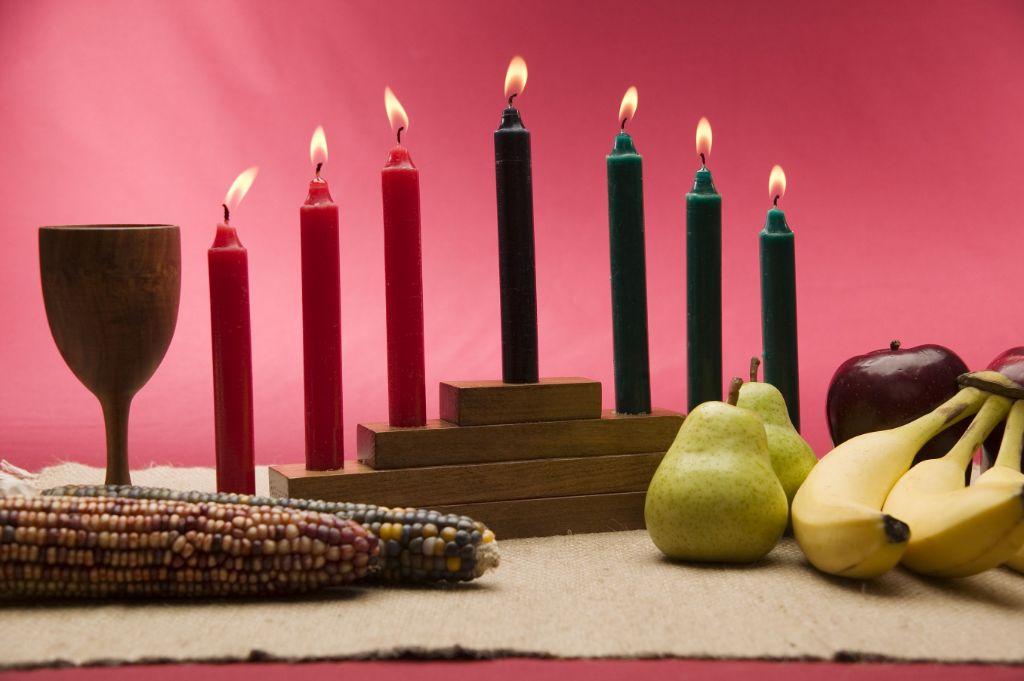Kwanzaa is an annual celebration of African American culture that is observed from December 26th to January 1st. An important part of Kwanzaa celebrations is the kinara, which holds the Mishumaa Saba (seven candles). Each candle represents one of the seven principles (Nguzo Saba) of Kwanzaa and is a different color.
Overview of Kwanzaa
Kwanzaa was created in 1966 by Dr. Maulana Karenga, a professor of African American studies. The name “Kwanzaa” comes from the Swahili phrase “matunda ya kwanza,” which means “first fruits.” Kwanzaa is based on African harvest festival traditions and brings family, community, and culture together.
During Kwanzaa, families come together to celebrate African American culture and heritage. There are 7 core principles that are honored, one for each night of the celebration. The principles, called the Nguzo Saba, are:
- Umoja (Unity)
- Kujichagulia (Self-Determination)
- Ujima (Collective Work and Responsibility)
- Ujamaa (Cooperative Economics)
- Nia (Purpose)
- Kuumba (Creativity)
- Imani (Faith)
These principles represent values that strengthen and unite the African American community. Each night during Kwanzaa, one principle is highlighted.
The Kinara and Mishumaa Saba
The kinara and mishumaa saba (the candle holder and seven candles) are the central symbols of Kwanzaa. The kinara holds the seven candles that represent the Nguzo Saba principles.
The kinara is traditionally made of wood and has 7 candle holders. Three green candles are placed on the left side of the kinara, three red candles are placed on the right side, and a black candle is placed in the center.
| Candle Color | Meaning |
|---|---|
| Black | Represents the African American people |
| Green | Represents the future and hope |
| Red | Represents the struggle and bloodshed of African Americans throughout history |
Each night during Kwanzaa, the appropriate candle is lit to honor that day’s principle. The black candle is lit first on December 26th. Then, candles are lit alternating between green and red, starting from the outside and moving inwards each night. On the final night, January 1st, all the candles are lit together.
The Colors and Their Significance
Let’s take a closer look at the meaning behind the colors of the Kwanzaa candles:
Black
The black candle that occupies the center position on the kinara represents the African American people, their culture, and their roots. Black exemplifies the color of the African American skin and serves as a reminder of their enduring strength and unity as a people.
The lighting of the black candle each night reaffirms the bonds between African Americans and their dedication to building a brighter future together. It reconnects them with the struggles and accomplishments of those that came before them and motivates their ongoing efforts.
Green
The three green candles on the kinara represent the future and hope for growth, progress, and prosperity. The green color embodies the lush, fertile soil of Africa and the possibilities that arise when African Americans come together in pursuit of shared goals.
Lighting the green candles inspires a vision of a more positive future – one in which African American families are united, youth are motivated to learn and lead, and communities are empowered to take collective action and uplift their circumstances.
Red
The three red candles remind viewers of the continuous struggle for freedom, equality, and justice. Red symbolizes the blood that was shed through centuries of oppression, from the Middle Passage through slavery to the fight for civil rights.
Lighting the red candles honors the sacrifice of ancestors and energizes new generations to continue pressing forward until African Americans have fully achieved the rights, respect, and representation they deserve. The red candles turn thoughts to both past and future action.
Conclusion
Kwanzaa brings African American families together to celebrate culture and heritage through the lighting of the kinara’s black, red, and green candles. Each candle color carries deep symbolic meaning.
The black candle represents African Americans and unity, the green candles symbolize their future hopes, and the red candles honor the ongoing struggle for equality and social justice. Lighting the candles reconnects celebrants with this history and inspiration.
The candle lighting ritual of Kwanzaa allows reflection on how far African Americans have come as a people and how far they still must go. The colors provide beauty and meaning that enhance this time of reverence, joy, and community.

